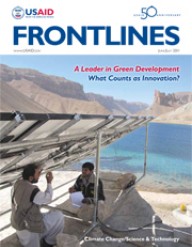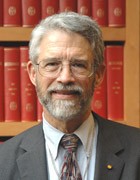The aim of development should be to improve human well-being in all of its major dimensions—not only the economic one but also environment and health, personal and national security, and civil society. The aim of sustainable development should be to achieve these gains in ways consistent with maintaining the improvements indefinitely.
The central relevance of science, technology, and innovation (ST&I) to these aims has long been clear.
Whether through the creation and distribution of improved crop varieties, the deployment of critical infrastructure for electrification and sanitation, or the delivery of modern medicines and vaccines, the efforts of scientists and engineers in industrialized and developing countries alike have been essential to progress in development.
Today, however, both the challenges and the opportunities around the application of ST&I to development are increasingly recognized as bigger than previously thought.
This is, in part, because the appropriate addition of sustainability to the criteria for success calls for greater understanding of and attention to the ways in which ST&I affects the environment, health, security, and civil-society dimensions of well-being.
The challenge inherent in the interactions among these different dimensions of well-being is particularly apparent at the intersection of economic growth and the integrity of critical environmental processes such as those that govern climate. It is clear that the combination of population growth, rising affluence, and the fossil fuel-based technologies used to provide most of the energy required has made human society a global climatological and ecological force, with impact running ahead of understanding.
A Challenge of Scale
Two insights about the nature of innovation that have gradually emerged over the last few decades are further reasons the challenges of ST&I in development are bigger than previously thought.
First, ST&I is not a “pipeline” in which investments in science and technology—and the associated generation of discoveries—necessarily lead to successful innovation defined in terms of widespread application.
Instead, the pace of progress depends on a complicated set of feedbacks among science, technology, and innovation in which availability of capital at the demonstration and pilot phases, incentives for public-private-academic partnerships, the existence or absence of subsidies for incumbent technologies, and many other factors play important roles.
The second insight is that ST&I for development usually cannot simply be “exported” from industrialized countries to developing ones. Applying technological advances in developing countries generally requires the creation of a degree of relevant scientific, technological, and institutional capacity in the developing countries themselves. Achieving this can be both costly and time-consuming. The more highly developed the “innovation ecosystem” within a developing country, the more effective will be cooperative efforts with others on applying ST&I to development.
While the challenges are great—indeed, in some respects unprecedented—so too are the opportunities. We now better understand the nature of the challenges. Recognizing what needs to be done in the way of attending to economy-environment interactions, providing for effective feedbacks between the different stages of innovation, and investing in indigenous capacity are essential steps. And there has already been much progress in these directions, above all in Asia and Latin America, but increasingly also in parts of Africa and the Middle East.
Another source of increased opportunity is the pace of recent progress in technologies with immense potential to help developing countries “leapfrog” over the conventional technologies that are too costly, too cumbersome, too inefficient, and too environmentally disruptive. These domains include nanoscience and technology, genomics, advanced information and telecommunications technologies, and cleaner and more efficient technologies for energy supply and end-use.
The Obama administration recognizes this nation’s core economic, security, and environmental interests in sustainable development around the world, and it recognizes the interconnectedness of development’s economic and non-economic dimensions as well as the challenges and opportunities associated with the application of ST&I to sustainable development goals.
These insights are reflected in the administration’s foreign policy, security policy, development policy, and science and technology policy—and in the close coordination among federal departments and agencies working in these domains. With the help of Congress, our many international partners, and the private, philanthropic, and academic sectors, we are making good progress, and going forward we will make much more.
John P. Holdren is the assistant to President Barack Obama for science and technology; director of the White House Office of Science and Technology Policy; and co-chair of the President’s Council of Advisors on Science and Technology.
The Character of Science, Technology and Innovation
Science is the systematic improvement of our understanding of ourselves, our world, and the universe based on the interaction of observation, theory, experiment, and continuous critical scrutiny of the results through peer review.
Technology consists of human-directed processes, devices, and systems for addressing human wants and needs.
Innovation entails combining science, judgment, and intuition to improve old technologies or develop new ones and to overcome the obstacles in the way of widespread application of these advances.










Comment
Make a general inquiry or suggest an improvement.